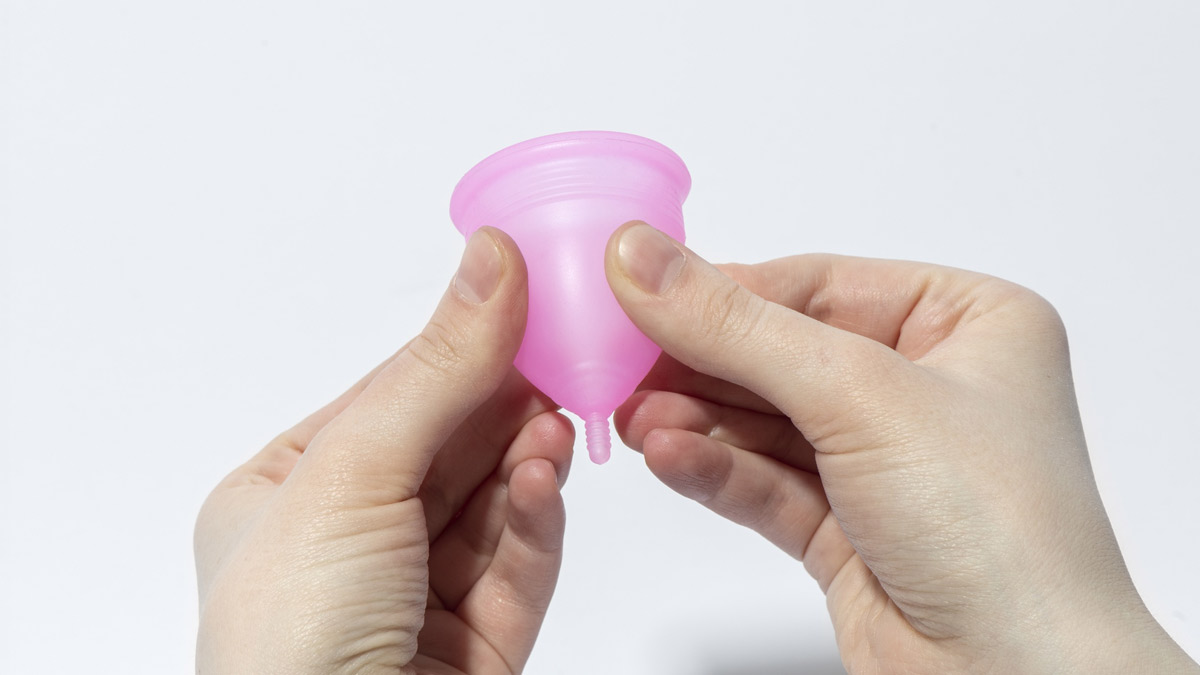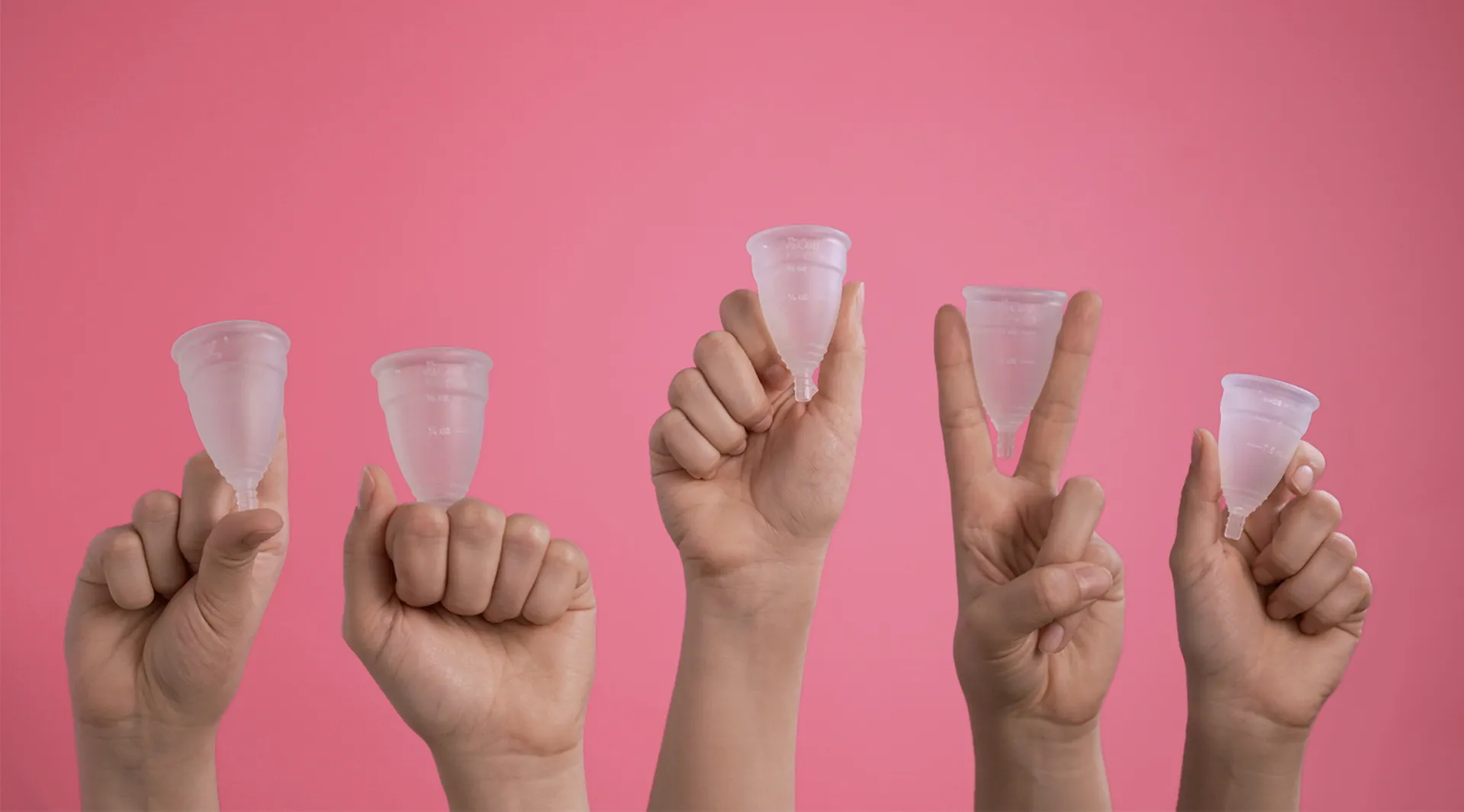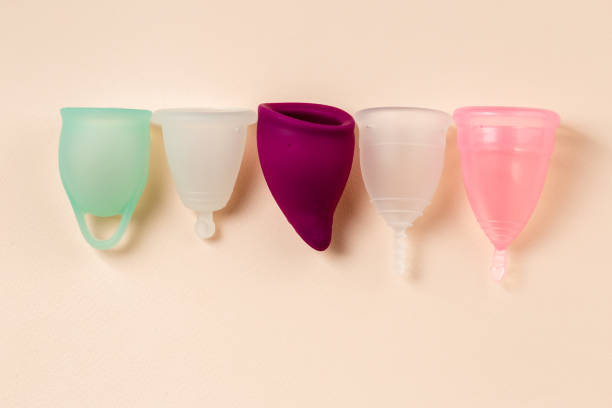Picture this: you’re in the midst of your period, and suddenly you find yourself in a panic, thinking, “Can my menstrual cup really get stuck?” Well, take a deep breath and relax. I’m here to assure you that your menstrual cup cannot wander off into the abyss of your body. It can only go so far until it reaches your cervix, and that’s the end of the tunnel.
Trust me, I’ve done my research. In this article, we’ll debunk common myths, provide expert insights, and equip you with the knowledge you need to handle any menstrual cup removal hiccups that may come your way. So, let’s dive in and put those fears to rest.
Contents
Can a Menstrual Cup Get Stuck?

If you’re new to using a menstrual cup, you may have concerns about it getting stuck inside your body. Rest assured, it is highly unlikely for a menstrual cup to get permanently stuck. The truth is, there is only one way in and out, so there’s nowhere else for it to go.
Your cervix serves as the endpoint for your menstrual cup. Once it reaches the cervix, it cannot go any further. So, even if you experience difficulty removing your cup, it cannot migrate into your uterus or get “lost” inside you. It’s important to remember this and not panic if you encounter any challenges during removal.
It’s also worth noting that the internet can be a source of conflicting information and opinions. That’s why it’s crucial to rely on reliable and fact-based advice. In this article, we provide expert advice from a family medicine doctor, Dr. Nicholas Goetsch, DO, to address concerns and offer practical solutions.
If you find yourself in a situation where your menstrual cup won’t budge, there are steps you can take to safely remove it. We understand that this can be a stressful experience, but don’t worry— we’re here to help. In the next section, we’ll guide you through the process of removing a stuck menstrual cup, ensuring a painless and stress-free experience.
Remember, your menstrual cup won’t get stuck or lost forever. With the right techniques and knowledge, you can easily resolve any difficulties you may encounter. So, let’s dive into the steps for removing a stuck menstrual cup and put your worries to rest.
Signs that Your Menstrual Cup Might Be Stuck
Difficulty in Removing the Cup
If you’re facing difficulty in removing your menstrual cup, it might be a sign that it’s stuck. While it’s important to note that a menstrual cup cannot get permanently stuck inside your body, it can sometimes create a suction seal that makes it challenging to remove. This can happen due to various reasons such as improper insertion, strong pelvic floor muscles, or incorrect cup size.
To address this issue, try the following tips:
- Relax: Take a deep breath and try to relax your body. Tension can make it harder to remove the cup.
- Change your position: Squatting, sitting on the toilet, or putting one leg up on the bathtub can help you find a more comfortable position for cup removal.
- Break the seal: Gently squeeze the base of the cup to break the suction seal. This can be done by using your pelvic muscles or by inserting a finger alongside the cup and pressing against the rim.
- Rotate and wiggle: While holding the base of the cup, try to rotate it slightly or wiggle it from side to side. This can help loosen the seal and make removal easier.
Uncomfortable or Painful Sensations
Feeling uncomfortable or experiencing pain while wearing your menstrual cup could indicate that it’s not properly positioned or that it’s causing irritation. It’s important to address these sensations promptly to ensure your comfort and overall well-being during your period.
Consider the following steps:
- Check the position: Insert a finger along the side of the cup to ensure that it’s fully unfolded and positioned correctly. If it feels folded or tilted, gently adjust it until it opens fully and forms a seal against the vaginal walls.
- Trim the stem: If the stem of the cup is poking or causing discomfort, you can trim it to a length that feels more comfortable. Be careful not to trim too much as it may make removal difficult.
- Lubricate: Applying a water-based lubricant around the rim of the cup can help with insertion and prevent any discomfort or irritation.
Leakage or Spillage Issues
Experiencing leakage or spillage while using a menstrual cup can be frustrating. It’s important to identify the cause of the issue and take appropriate steps to prevent it from happening again.
Consider the following tips:
- Check the seal: Before assuming that the cup is too small or not suitable for your flow, ensure that the cup is properly sealed against the vaginal walls. Gently run a finger around the cup to ensure there are no folds or gaps.
- Empty the cup regularly: If you’re experiencing heavy flow, it may be necessary to empty your cup more frequently to prevent overflow.
- Consider a different cup size: If leakage persists despite proper positioning and regular emptying, you may need to consider a different cup size that accommodates your flow.
Remember, it’s important to remain calm and patient if you encounter any difficulties with your menstrual cup. With the right techniques and knowledge, any issues can be resolved. If you’re unsure or concerned, don’t hesitate to reach out to a healthcare professional or the cup manufacturer for guidance.
Tips for Preventing a Menstrual Cup from Getting Stuck

Choose the Right Size and Shape
To prevent your menstrual cup from getting stuck, it’s important to choose the right size and shape for your body. A cup that is too big or too small can cause discomfort and make it harder to remove. When selecting a cup, consider factors such as your age, whether or not you’ve given birth, and your flow intensity.
Ensure Proper Lubrication
Using a water-based lubricant can make insertion and removal easier. Before inserting your cup, apply a small amount of lubricant to the rim to help it glide smoothly. This can reduce the chances of the cup getting stuck or causing discomfort. Remember to choose a lubricant that is compatible with your menstrual cup material.
Take Your Time and Relax
One of the most important tips for preventing a menstrual cup from getting stuck is to relax. If you’re feeling anxious or tense, it can make removal more difficult. Find a comfortable position, such as sitting on the toilet or squatting, and take deep breaths to help your muscles relax. Remember, your pelvic muscles naturally contract when you’re stressed or anxious, so staying calm and taking your time can make the removal process smoother.
Break the Suction Seal
If you’re having trouble removing your menstrual cup, breaking the suction seal can make it easier. Gently squeeze the base of the cup to release the seal before attempting to remove it. This can help reduce any discomfort and make the cup slide out more easily.
Adjust the Cup’s Position
Sometimes, the position of the cup inside your vagina can cause it to feel stuck. Try reaching up and gently adjusting the cup’s position. You can rotate it slightly or push it higher or lower to find a more comfortable position. This can help relieve any pressure or discomfort and make it easier to remove.
Trim the Stem
If the stem of your menstrual cup is causing discomfort or making it difficult to remove, you can consider trimming it. Use a clean pair of scissors and carefully trim the stem little by little until you find a length that is comfortable for you. Just be cautious not to trim too much, as you still want to be able to easily reach and remove the cup.
Empty the Cup Regularly
To prevent the cup from overflowing and causing leaks, it’s important to empty it regularly. Ideally, you should empty your cup every 4-8 hours, depending on your flow. By emptying it frequently, you can avoid any potential issues with the cup getting stuck or causing discomfort.
Consider Seeking Professional Guidance
If you’ve tried these tips and are still having difficulty removing your menstrual cup, don’t hesitate to seek professional guidance. A healthcare provider or a gynecologist can provide expert advice and assistance. Remember, a menstrual cup cannot get permanently stuck inside your body, so it’s important to rely on reliable sources and seek help if needed.
Remember, with the right size and shape, proper lubrication, relaxation, and the right techniques, you can prevent a menstrual cup from getting stuck. By taking these precautions, you can have a comfortable and hassle-free experience with your menstrual cup.
What to Do If Your Menstrual Cup Gets Stuck?
Stay Calm and Don’t Panic
If you find yourself in a situation where your menstrual cup feels stuck and you’re having trouble removing it, it’s important to stay calm and not panic. Remember, a menstrual cup cannot get permanently stuck inside your body. Panicking will only make the situation more difficult. Take a deep breath and try to relax.
Try Different Techniques for Removal
If you’re having difficulty removing your menstrual cup, there are a few techniques you can try:
- Change Positions: Sometimes, changing your position can make it easier to reach and remove the cup. Try squatting, lifting one leg up, or even sitting on the toilet. Find what works best for you.
- Break the Suction Seal: The suction seal between the cup and your vaginal walls can make removal challenging. To break the seal, gently squeeze the base of the cup with your fingers. This will release the suction and make it easier to remove.
- Adjust the Cup’s Position: If the cup feels stuck, it may be because it’s positioned too high or too low in your vagina. Try reaching up and adjusting the cup’s position. You can also try rotating it slightly to help release the seal.
- Trim the Stem: If the stem of your menstrual cup is too long, it can cause discomfort and make removal more difficult. Consider trimming the stem slightly to make it more comfortable to wear and easier to remove.
- Lubricate: If you’re experiencing discomfort or resistance during removal, try using a water-based lubricant to help the cup glide out more easily. Apply a small amount to the rim of the cup before attempting to remove it.
- Check the Seal: Before attempting to remove the cup, make sure it’s fully collapsed and not creating a suction seal. Gently press on the cup to release any remaining suction before trying to remove it.
- Empty Regularly: To avoid potential spillage or leakage, make sure to empty your menstrual cup regularly. This can also help prevent the cup from becoming too full and difficult to remove.
Seek Medical Help if Necessary
While it’s rare for a menstrual cup to get stuck, there may be instances where you’re unable to remove it on your own. If you’ve tried different techniques and are still unable to remove the cup, it’s important to seek medical help. A healthcare professional can provide guidance and assistance to ensure the cup is safely removed.
Remember, experiencing difficulties with menstrual cup removal is not uncommon, and there are solutions available. Stay calm, try different techniques, and seek professional help if needed.
Which Cups Are Most Likely to Get Stuck?

When it comes to menstrual cups, some designs are more prone to getting stuck than others. While it’s important to remember that a menstrual cup cannot get permanently stuck inside your body, certain cup shapes and sizes can make removal a bit more challenging. Here are a few factors to consider when choosing a cup to minimize the risk of it getting stuck:
1. Length of the Cup: Cups that are longer in length may be more likely to sit higher in the vaginal canal, making it harder to reach for removal. If you have a shorter vaginal canal or prefer a lower cup placement, opt for a cup with a shorter length.
2. Firmness of the Cup: Cups that are too firm or rigid may create a stronger suction seal, making it more difficult to break the seal and remove the cup. If you’ve experienced difficulty breaking the seal in the past, consider trying a cup with a softer or more flexible material.
3. Stem Design: Some cups have longer or thicker stems that can cause discomfort or make removal cumbersome. If you find that the stem of your cup is getting in the way or causing irritation, you may want to consider a cup with a shorter or more flexible stem, or even a stemless design.
4. Cup Diameter: Cups with a wider diameter may require more effort to fold and remove. If you have a narrower vaginal opening or prefer a smaller cup, opting for a cup with a narrower diameter may make removal easier.
Remember, while these factors may increase the likelihood of a cup being more challenging to remove, it’s important to approach removal calmly and patiently. Use relaxation techniques, change positions, and take your time to ensure a smooth and comfortable experience.
Now that you know which cups are more likely to get stuck, let’s move on to the next section for tips on how to handle cup removal difficulties.
Conclusion
By following the practical tips and advice provided in this article, you can effectively handle any potential difficulties with menstrual cup removal. Remember, a menstrual cup cannot get permanently stuck inside your body. If you experience any signs of the cup being stuck, such as difficulty in removal, discomfort, or leakage, there are several solutions to try.
Relaxation techniques, changing positions, and taking your time can help ease the removal process. Breaking the suction seal, adjusting the cup’s position, and trimming the stem are also effective strategies. Additionally, ensuring proper lubrication, checking the seal, and emptying the cup regularly are important steps to prevent any issues.
Choosing the right cup size and shape, considering factors like length, firmness, stem design, and diameter, can minimize the risk of the cup getting stuck. If you continue to face difficulties, it is always a good idea to seek professional guidance.
Remember, with the right knowledge and techniques, using a menstrual cup can be a comfortable and hassle-free experience.
Should I trim the stem of my menstrual cup?
Yes, it is recommended to trim the stem of your menstrual cup if it feels too long or uncomfortable. The stem should protrude slightly from the vagina, but if it is poking or irritating you, it can be trimmed to a more comfortable length.
Can a menstrual cup get stuck inside my body?
No, a menstrual cup cannot get permanently stuck inside the body. It may take some time and patience to remove, but it will come out. Relaxation techniques and adjusting positions can help ease the process. Seek professional guidance if you are having difficulty removing it.
Can I use a menstrual cup if I have a low cervix?
Yes, there are menstrual cups specially designed for those with a low cervix. Look for cups with a shorter length or a compact design. It’s important to choose a cup that fits your body properly to ensure comfort and effectiveness.
I am a medical student with experience and interest in Women’s health and well-being.